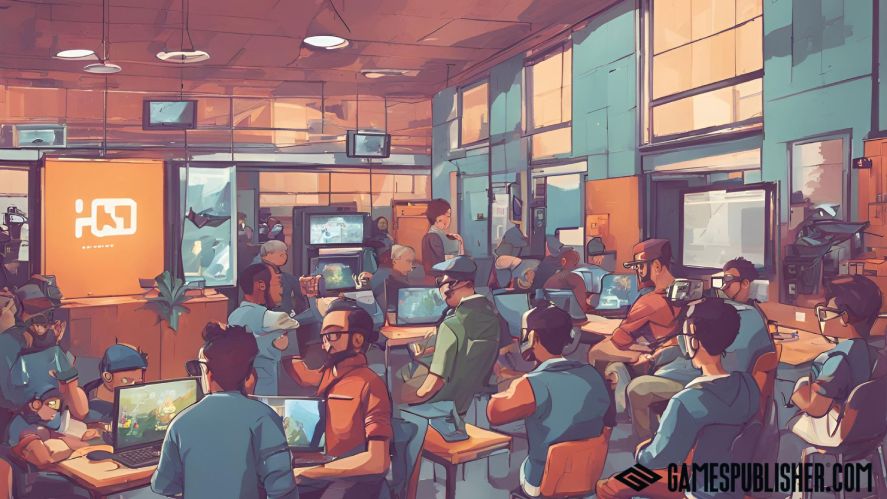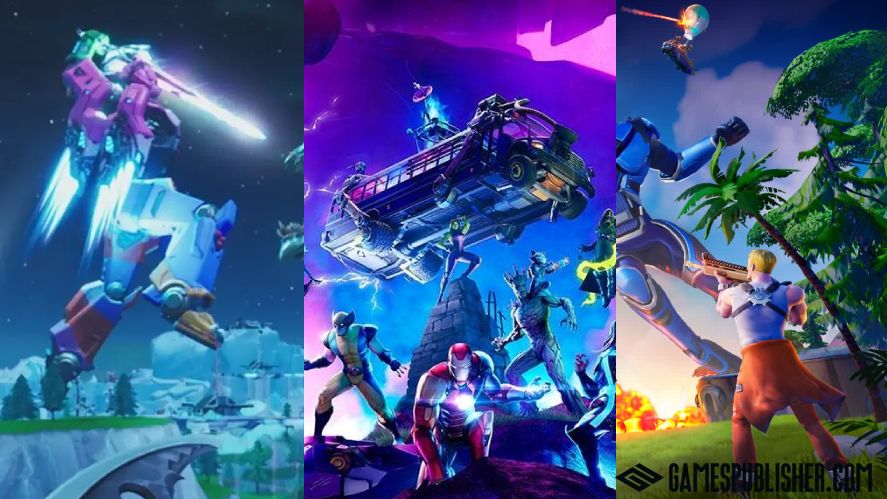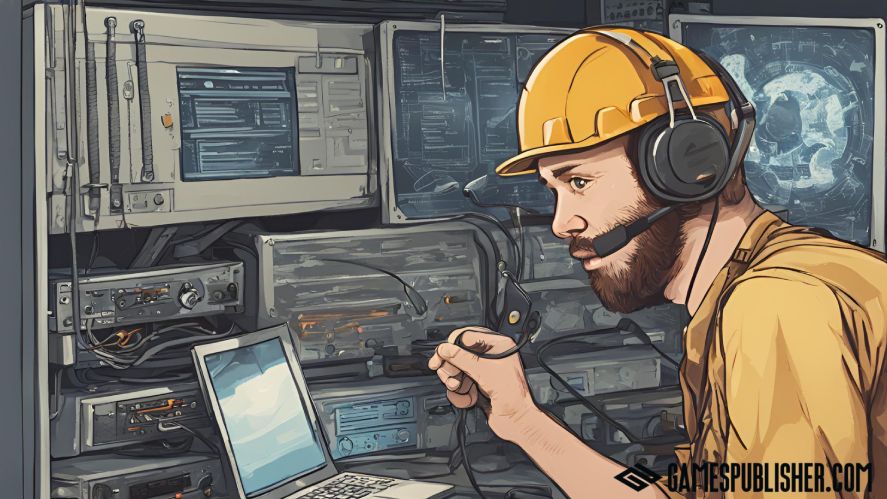In today’s digital gaming market, launching a game is just a start. To keep a game consistently successful and maintain player engagement over a long period, continuous game development post-launch support is necessary.
This support provides quick responses to gamers’ feedback and necessary adjustments in a timely manner, which makes a huge difference for the game in the competitive landscape.
By addressing issues promptly, developers can keep the game fresh and engaging for most players.
When indicating post-launch support, it means game developers have to fix bugs, update content, engage with the community to collect feedback, and also use analytics to keep track of their improvement.
Engaging with the Community
Engaging with the gaming community is especially important in the game development post-launch strategy.
Because players are those who directly experience the games, their opinions matter.
If game developers understand what players like, what they don’t like, and what they want to see in the future, developers can fix bugs and add new content or features to the new updates.
Then, capture the interests and preferences of the majority of players and turn them into brand advocates.

The more brand advocates video game publishers have for their own games, the more likelihood that they spread their interests and positive words to others, which, eventually, brings the game’s popularity and success.
It’s better to have a dedicated place for a game title to bring the interactions with players.
Ideally, creating a branded forum, social media, or a discord server for the game to encourage players to come and share their experiences while playing that game.
This also makes it easier for developers to spot common issues and announce with players about new updates.
Ultimately, these communities facilitate two-way communication between developers and players.
Regular Content Updates
Fixing bugs and keeping the game stable is necessary, but it’s not enough.
Game developers have to do more to keep players engaged and interested in the game for a longer period.
They have to regularly update content by introducing new things to players, such as new features, levels, storylines, and characters.
This not only prevents the game from becoming boring but also keeps the game’s position in the competitive gaming industry.
So, now that you understand the importance of content updates in the video game industry, which types of content updates keep a game engaging?
Look at the below:
- New Game Modes: Adding new game modes can change how players experience the game, making it more exciting.
- New Levels or Maps: Introducing new maps or levels provides players with fresh environments to explore and compete in.
- New Characters: Adding new characters can diversify gameplay and allow players to try different playstyles.
- In-game Events: Hosting special events can create unique experiences and keep the game dynamic.
- Cosmetic Items: Offering new skins, outfits, and other cosmetic items allows players to personalize their gaming experience.

For example, Fortnite is a successful game thanks to the way it frequently introduces new in-game events and seasonal content to its audiences.
The game is updated on a weekly basis with various features adapted to the needs of its players. Moreover, it has special events to keep players engaged along the way.
Technical Support and Bug Fixes
Bugs and technical problems can mess up the game experience and make players frustrated, so they need to be addressed timely.
To quickly fix these issues, game developers have to identify and prioritize bugs that directly affect the player experience after the game launch.
Developers can source prominent bugs and issues from these places: surveys, reviews, social media, or game communities.
Once they have the list of issues and bugs on hand, game developers will categorize and prioritize them based on the levels of their impact and urgency.
After bugs are fixed, players can fully enjoy the game without any interruption.
The resolving of bugs is extremely important as it can affect the reputation of the game; timely fixes can lead to positive reviews about the game.

However, in this bug-fixing journey, game developers might feel overwhelmed by the high volume of issues that need to be addressed within a short period of time.
There are so many problems to deal with, and of course, players want them to be fixed quickly so as not to interrupt their experience.
That’s where co-development comes in handy. By teaming up with other experts in the same field, developers can share the workload and get things done faster.
This way allows developers to tackle issues quickly and provide better support to adapt to audiences’s expectations.
Analytics and Optimization
After launching the game to the public, it’s crucial to keep an eye on key metrics to understand how well it’s performing in the market.
There are various metrics to help developers catch up on this, such as:
- Player Engagement: Measures how much time players spend in the game and how often they interact with its features.
- In-game Purchases: This tells us if players are buying things in the game and which items are best sellers.
- Active User Count: This shows how many people are actually playing the game regularly.
So, developers should set up a dashboard or use analytic tools to monitor these numbers carefully to see what’s going on with their creation.
The numbers never lie; they provide developers with insights into what’s working and what needs improvement.
Tracking these metrics frequently helps developers measure the impact of their updates and changes, and pinpoint the weaknesses to find out the next actions.
Thus, it’s ideal to leverage the analytical numbers, make informed decisions based on that to optimize the game to the fullest, and eventually, pave the way to success.
Marketing and Continued Promotion
Strategic marketing and game promotion are extremely important to maintain the presence of the game in the public eye.

Game Development Post-Launch Marketing Strategies
It’s important to keep the game appearing as much as possible in front of potential players.
Here are some effective strategies to achieve it:
- Influencer Partnerships: Working with popular gamers or YouTubers can help spread the word about the game to their followers.
- Social Media Campaigns: Sharing updates and fun stuff about the game on social media keeps players interested and engaged.
- Participation in Gaming Events: Going to gaming events lets developers show off the game to more people and get them excited about it.
Leveraging User-Generated Content
User-generated content can also be a powerful tool for promotional purposes.
When players share their experiences about the game through reviews and gameplay videos, they’re spreading their interests to others.
- Reviews: Good reviews from players can encourage others to try the game too. So, developers should ask players to leave reviews on the Steam gaming platform or other online gaming platforms.
- Gameplay Videos: Sharing videos of players enjoying the game can give potential gamers a preview of what to expect.
- Trending Content: Encouraging players to share fan art or memes related to the game can keep it trending on social media.
Conclusion
After launching the game, the journey has just started.
To make the game truly successful, a long-term plan for game development post-launch support is essential.
For all aspiring developers out there, staying connected with your player community is super important. By listening to players, fixing bugs, and regularly updating content, you can keep the game fun and exciting for everyone.
This is the best way to ensure your game stays popular and continues to grow in this ever-changing world of gaming.
Loading survey...

